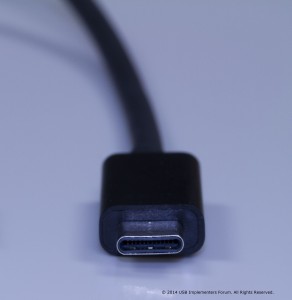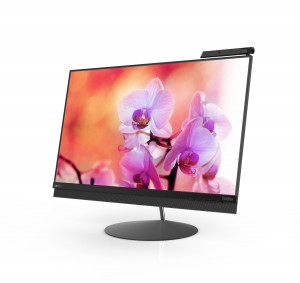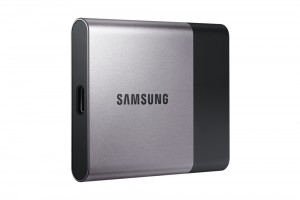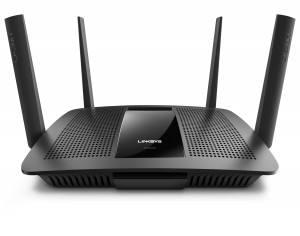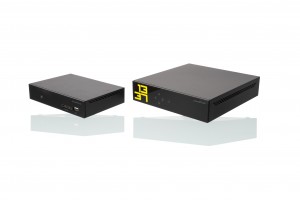Consumer Electronics Show 2016–Part 2 Accessories, Peripherals and the Home Network
I am continuing to write up about the trends that have been presented at the Consumer Electronics Show 2016 in Las Vegas, USA.
- Part 1 – Desktop and Mobile Computing
- Part 2 – Accessories, Peripherals and the Home Network
- Part 3
- Part 4
Just before, I had covered the trends affecting desktop and mobile computing with such things as 4K and OLED screens, narrow bezels, Intel Skylake internals, business computers appearing at a consumer-focused show, and gaming computers that are rated for Oculus Rift.
Now I will be covering various peripherals, accessories and how your home network will evolve.
Display Monitors
The display monitors for your computer are following a similar trend to what is happening for TV. This includes 4K ultra-high-resolution screens and curved displays. But a few manufacturers are rolling out OLED screens in their product lineup. This will mean that you could see the benefit of increased contrast and colour definition on your computer’s display whether it serves as a secondary or “desktop” monitor for your laptop or primary or secondary monitor for your desktop.
One of tbe trends starting to appear is for a display monitor to have a USB Type-C connector, more so with DisplayPort over USB-C connectivity. This capitalises on the fact that the monitor will be connected to a suitably-equipped laptop, tablet or 2-in-1 and will be this cable is the one cable that will provide power to charge or run the portable along with a physical link for data and video. Most of these monitors will have a self-powered USB hub along with an integrated Webcam and speaker system. On the other hand, there are the 15”-19” portable monitors with USB-C connection and powered by the host computer which will serve as portable “extra-screens” to use with these computers.
ASUS has presented the latter type of these displays with their MB169C which is a 15” portable monitor that features a 15.6” Full HD LCD screen and connects to the host computer via a USB Type-C connector. They also launched the MX27UQ which is a 27” 4K UHDTV screen with Bang & Olufsen ICEPower amplification for the sound and can stream sound from your computer or smartphone via Bluetooth. This is available in an Icicle Gold finish. They also launched a 34” curved monitor with a UQWHD (3440×1440) resolution that has a Qi wireless charging base and has its sound amplified using B&O ICEPower technology.
Lenovo has added the ThinkVision X1 monitor to their premium “X1” computing product lineup with this one being equipped with a 27” 4K IPS screen set against a very narrow bezel. It is intended to be an “at-base” companion to the latest crop of laptops thanks to a USB Type-C connection that provides power to the laptop that it is connected to as well as being a USB hub. It also comes with a 1080p Webcam that has a microphone array, LED lighting and mechanical privacy filter; along with a stereo pair of 3W speakers. It can also be connected to other devices thanks to an HDMI 2.0 or DisplayPort 1.2 connector.
The Lenovo ThinkVision X24 Pro adds on an Intel RealSense camera and the option for a WiGIg connection bar for wireless connectivity with suitable laptops and tablets. Gamers will relish in the fact that Lenovo has catered for them with the Y27g Razer Edition curved gaming monitor which has a 27” Full HD display and RGB lighting on the back to providing interesting effects. This also can work tightly wiht G-Sync-capable display cards.
LG advanced the 27UD88 27” 4K gaming monitor that optimises itself to work with the latest AMD graphics subsystems.
Dell has not been quiet on the display monitor front with them offering a range of 21” and 23.8” wireless monitors that can work with Windows and Android devices. These also have a Qi / PMA wireless charging base with the smaller variant having 2 three-watt speakers and the larger variant having a narrow bezel and improved colour accuracy.
They alos premiered the UltraSharp 30 which is a 30” 4K OLED monitor that also uses a USB Type-C connector as a way to connect to the host device.
Computer Peripherals and Accessories
With the computer manufacturers releasing more devices that are equipped with USB Type-C connectors, especially as a way to power these devices, the peripherals and accessories scene has responded with a range of devices that have USB Type-C connections.
Lenovo will be fielding the WriteIT 2.0 which adds pen capabilities to any Windows-based tablet or 2-in-1 that implements a touchscreen. This could then allow you to benefit from pen-based operation without paying dearly for that function. Wacom are also selling this same stylus as the Bamboo Smart and thsi works with “active electrostatic” or capacitive touch screens.
The Lenovo Link 32Gb memory stick celebrates mobile and regular open-frame computing very finely by allowing you to connect your Windows and Android devices to each other. This allows you to mirror your Android phone’s display on your Windows computer and provides local file transfer between both platforms. It will work with Android 5.0, Windows 7 and newer versions of these operating systems and your smartphone will have to have a USB On-The-Go connection or USB Type-C connection.
Lenovo also added to the ThinkPad Stack an external battery pack and a pico projector.
Samsung used their expertise in developing solid-state flash storage to prepare a USB portable storage device that can hold up to 2Tb of data, the same quantity as a lot of USB hard disks. This connects to the host device using a USB 3.1 Type-C connection but you could connect it to existing devices using a USB Type-C adaptor cable.
Griffin are known for aftermarket accessories and peripherals that are typically pitched to the Apple ecosystem but, in a lot of cases, can work wiht omst computers. They have fronted up with the BreakSafe cable which gives USB Type-C connections the same “safe disconnect” abilities as Apple’s MagSafe connection, a boon to those of you who own the latest 12” Apple MacBook that uses this connection. They also launced an external battery pack that attaches to your keyring so you can charge up your Apple Watch when out and about. They also launched the Survivor Slim Case which is a ruggedised case for the Microsoft Surface Pro 4.
Seagate have launched one of the slimmest USB external hard disks around in the form of the Backup Plus Ultra Slim external hard disk. This device has a thickness of 9.6mm and is about more data in a slimmer package. As required for Seagate external hard disks, this unit has backup software with one-touch or scheduled host-system backup. Similarly, LaCie have launched an external hard disk that has Porsche design and connects to your host computer via USB Type-C. But this unit has another USB Type-C connection so you can charge your MacBook or other USB Type-C computer without forfeiting hte ability to use the external hard disk.
Scosche have also launched a lineup of USB Type-C cables, port hubs / chargers and adaptors. One of these is the StrikePort USB-A + HDMI + USB-C adaptor which has a USB Type-C connector for charging while another of these is the StrikeDrive USB-C car adaptor which plugs in to your vehicle’s cigar-lighter socket so you can charge your USB-C devices – this can charge or power 2 12-watt USB-C devices. There is also a range of StrikeLine charge-and-sync (data) cables with ones that connect a USB-C device to a USB-A device and another that connects a USB-C device to a MicroUSB device.
Panasonic have established the case for BluRay optical discs as a “cold-storage” medium for archived data and this is based on what Facebook is storing those selfie snaps, holiday pictures and other images that you tender to the social network. They have started with 100Gb disks bot are moving towards 1 Terabyte disks which they are calling “Freeze Ray”.
Braven have come forth with a slew of accessories for your smarpthone or tablet. One of these is the BRV-BANK Pro LE which is an ultra-rugged modular battery pack . This pack has a 300-lumen LED torch and is built in aircraft-grade alumium housing and can charge devices via a 1.4A USB port and a 2.1A USB port. The device has a waterproof rating for IPx7 and houses a 6000mAH battery.
But it is part of a Braven accessory ecosystem with a solar charging panel, speaker, multi-tool, GoPro action mount and a stacking plate. A smartphone app which links to this battery pack via Bluetooth supports a “Find Me” function which causes the torch to flash SOS in Morse code. Campers will also appreciate the “Bear mode” that uses the smartphone’s motion sensors to alert the BRV-BANK Pro LE and cause it to flash the torch light and sound an alarm if the phone is disturbed. Here, the idea is to pack the phone with your food supply and be alerted if the local wildlife starts raiding your food supply and is a problem that faces North American campers because of bears being too dependent on campers’ food supplies.
Razer have even provided Intel RealSense technology in to an add-on Webcam in the form of the Stargazer 3D Webcam. This can give existing desktop computers that don’t necessarily come with integrated RealSense abilities this kind of sensing and could open them towards Windows Hello facial recognition along with 3D scanning.
In an out-of-the-ordinary move, Black & Decker, know for those power drills, have integrated USB device-charging functionality in to their power-tool batteries. They also implement an app to support a “find-me” functionality along with the ability to support a “check-in / check-out” function and the ability to control when the batteries are used.
Your Home Network
Yhere are a few trends that are affecting the home network and how it is set up. One of these is 802.11ac Wave-2 Wi-Fi with MU-MIMO operation. The MU-MIMO function effectively creates dedicated bandwidth for each MU-MIMO device that uses the network but also frees up more bandwidth for ordinary Wi-Fi devices. This function is moving down towards the mid-tier routers and starting to appear in wireless range extenders with this function being about optimised bandwidth on the backhaul link and the device-side link.
It was also the time that the IEEE and Wi-FI Assocations have cemented the 802.11ah 900mHz “HaLow” wireless-network specification. This uses a lower frequency than 2.0GHz 802.11b/g Wi-Fi thus having a longer range and lower power but it doesn’t have the same data bandwidth as the Wi-Fi standards that we currently use for the home network. This will be pitched towards the “Internet Of Things” application case where a lot of sensors and allied devices will rely on batteries expected to run for a long time.
As far as HomePlug AV2 is concerned, the concept of the HomePlug access point which supports 802.11ac Wi-Fi and HomePlug AV2 has finally hit American shores thanks to Netgear.
Linksys have released their EA9500 4×4 802.11ac MU-MIMO router with Gigabit WAN and 4 x switched Gigabit LAN. This uses eight antennas to provide the MU-MIMO function. There is also the EA7500 3×3 802.11ac MU-MIMO router which is similar to the EA9500 but has reduced MU-MIMO abilities.
The Linksys RE7000 4×4 MU-MIMO range extender optimises the bandwidth used for the downstream devices whin it is linked to a MU-MIMO access point. As well, this multifunction range extemder has a Gigabit Ethernet port and can be set up to serve as a wired client bridge for a wireless network or as a MU-MIMO wireless access point – the latter being a way to upgrade your wireless netowrk to MU-MIMO abilities without throwing out your existing router. They also offer a MU-MIMO USB wireless network adaptor so you can join MU-MIMO wireless netowrk segments using your existing laptop.
Linksys have released DOCSIS 3.0 cable-modem hardware including a cable modem-router. They also exhibited the X6200 which is an ADSL2/VDSL2 modem router works on the 802.11ac standard.
D-Link have sold the AC4300 MU-MIMO wireless router and AC1300 MU-MIMO range extender as a kit in order to appeal to those of us who have larger houses.
Netgear have released the R7800 Nighthawk X4S Smart Wi-Fi Router whcih handles MU-MIMO with four streams and a processor improved on the previous model. This device also has the ability to work on 160Mhz channel bandwidth.
They also released the C7000 which is an AC1900 cable modem router that is part of the Nighthawk router lineup. For that matter, new firmware that will be available for the Nighthawk router lineup will offer native support for Netgear’s Arlos lineup of network cameras.
As for range extenders, the EX7300 Nighthawk X4 is a wall-plugged AC2200 unit with MU-MIMO for both the upstream and downstream paths. There is the EX6400 range extender which is the first wall-plug AC1900 range extender. Both these range extenders can also serve as access points to work wiht Ethernet or HomePlug wired backbones or as client bridges to serve wired network devices like smart TVs.
The PLW1000 HomePlug AV2 wireless access point can establish an 802.11ac wireless segment and can provide a HomePlug AV2 SISO (two-wire) backbone to the router. This functionality was offered by Devolo and was available only within Europe. But now, the Netgear device is the first device of its kind that is offered by a major home-network name to offer this kind of functionality to the North American market.
TP-Link have demonstrated a router that may have ordinary capabilities but be a “smart home” hub. The SR20 offers a throughput of 1300Mbps on 5Ghz 802.11ac and 600Mbps on 2.4GHz 802.11n and implements beamforming along Gigabit Ethernet for WAN and LAN. But it can be a “smart home” hub for Z-Wave and Zigbee devices and works alongside the Kasa mobile-platform dashboard app. This is similar to the Securifi Almond series of routers which have this kind of functionality and is the first of such devices to be released by a major home-network name.
Conclusion
After seeing a USB-C-driven direction for peripherals, OLED starting to light up computer display monitors, along wiht MU-MIMO increasing the throughput on Wi-Fi home networks, I will be covering in the next article about photography, audio and video trends from CES 2016.
Next, I will be covering the trends affecting digital photography and videography along with audio and video recording and reproduction technology.

